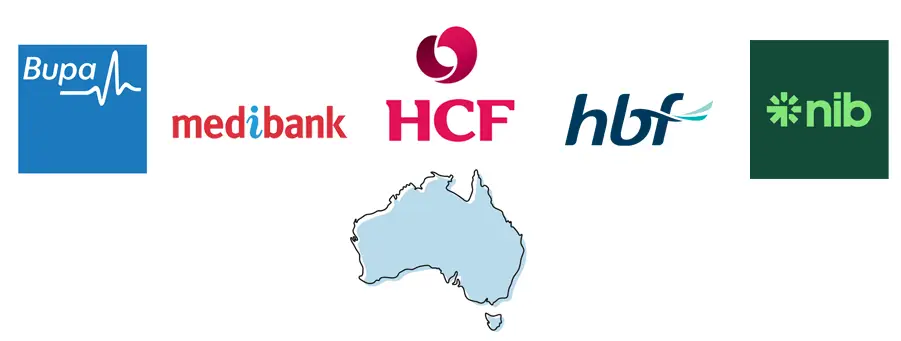
what is the health insurance tax?
All Australians contribute 1% of their income to support Medicare and our public health system through a tax called the Medicare Levy. If you earn over the taxable income thresholds listed in this article, you will have to pay an additional tax for the 2022/2023 financial year called the Medicare Levy Surcharge. You can avoid all or part of this additional tax surcharge if you hold at least a private hospital cover policy during the same financial year. For every day you have private hospital cover, you avoid the Medicare Levy Surcharge for that day come tax time in 2023. The same income thresholds apply to the private health insurance government rebate, which we will also detail below.
The medicare levy surcharge explained
In private health insurance, the Government gives and the Government takes away. With one hand they give us the health insurance Government Rebate as a contribution towards our health insurance premiums and yet, in the other hand, they may tax some higher-earning Australians an additional 1 to 1.5% of their taxable income in the form of the Medicare Levy Surcharge (MLS). This is not to be mistaken with the Medicare Levy which all Australian’s must pay, after all, it supports our wonderful (albeit sometimes flawed) public health care system.
The Medicare Levy Surcharge is an additional tax on top of the Medicare Levy. This was done so as to encourage more people to take out private hospital cover if they are in an income bracket that should be able to afford it, or if not, to contribute more towards Medicare than low-income earners. The end result is less pressure on our public health system because more Australian’s have the option to use a private doctor and private hospital accommodation for their medical treatments.
THE INCOME THRESHOLDS FOR MEDICARE LEVY SURCHARGE
Use this table to first find which income tier you’re in based on your single or combined gross annual income, and then use the table at the bottom to find which surcharge you might have to pay.
Disclaimer! this pertains to your total taxable income from all sources. If you are unsure, please consult your accountant or financial adviser before purchasing any health insurance.
MEDICARE LEVY SURCHARGE, WHAT YOU WILL PAY OF YOUR TAXABLE INCOME
This tax can be completely or partially avoided for the financial year only by holding at least a basic private hospital cover policy.
Things You Need to Know
- If you do not earn above these listed income thresholds you will not have to pay the additional surcharge and will not need to take out a private hospital cover policy for tax purposes. Despite this, many Australians who earn below these thresholds still hold a private hospital cover policy so that they can avoid public waiting lists, choose their own private doctor and opt for a private room in a private hospital for any medical, in-patient procedures.
- You may have only held private hospital cover for a portion of the financial year or perhaps it may have lapsed for a period during the year. The financial year is broken down into 365 days; for every day you held private hospital cover you will avoid the Medicare Levy Surcharge for those days.
- Your health fund will send you a tax statement at the end of the financial year to give to your accountant or to provide to the ATO. If you submit your own tax returns and are unsure about how the Medicare Levy Surcharge may have affected you this year, please seek financial advice.
if you’re still unsure if you or your family will get hit with the Medicare Levy Surcharge in 2023, please get in touch with our private health insurance advisers and we can clear it up for you.
Private health insurance Goverment Rebate 2023
The Australian Government contributes towards your private health insurance costs, which is means-tested based on your single or household income. The rebate can be deducted from your premiums or you can claim it as a lump sum at tax time. Most health funds advertise their policy prices with the full rebate included so it is very important you make sure your rebate is correct before you apply.

How Does the private health insurance government rebate work?
The Government contributes towards our private health insurance costs in the form of a rebate. Most Australians simply pay their health insurance premiums with the rebate already subtracted from the cost, however, there are some people who opt to pay the full unrebated amount and then claim the rebate back in full at tax time – either way, you end up paying the same amount for the policy.
The rebate on health insurance is increased when you turn 65 and then again when you turn 70. This helps retirees and pensioners afford top hospital cover at a time in life when it may be needed most. The Government Rebate is also means tested meaning that if you earn above a particular amount of taxable income in any financial year then the rebate will be reduced or not available to you at all. The following table describes the income threshold tiers for a Single, Couple, Single Parent and Family in relation to which government rebate you are entitled to:
Government Rebate Tiers
Use this table to find which rebate tier you are entitled to based on your single or combined annual income bracket.
Use this table to find which rebate tier you are entitled to based on your single or combined annual income bracket.
70+
Things You Need To Know
- The income thresholds described in the above table are based on your total taxable income for the current financial year. If you are unsure about what this is you may need to ask your accountant.
- If you claim the incorrect rebate on your health insurance premiums it will simply be adjusted on your tax return. For example, if you claimed a Base Tier rebate for the year and ended up earning more than expected and end up falling into Tier 1, then the difference is taken from your tax return (and vice versa).
- The income threshold for single parents and families is increased by $1,500 per child after the first child. De-Facto relationships are considered as a Couple/Family relationship in regard to the rebate.
- At the end of the financial year your private health fund will send you a letter describing your total paid premiums for the financial year including any rebated amounts. This is to be provided to your accountant. If you complete your own tax returns and are unsure about your private health insurance rebate, please seek financial advice.
- The income thresholds described in the above table are based on your total taxable income for the current financial year. If you are unsure about what this is you may need to ask your accountant.
- If you claim the incorrect rebate on your health insurance premiums it will simply be adjusted on your tax return. For example, if you claimed a Base Tier rebate for the year and ended up earning more than expected and end up falling into Tier 1, then the difference is taken from your tax return (and vice versa).
- The income threshold for single parents and families is increased by $1,500 per child after the first child. De-Facto relationships are considered as a Couple/Family relationship in regard to the rebate.
- At the end of the financial year your private health fund will send you a letter describing your total paid premiums for the financial year including any rebated amounts. This is to be provided to your accountant. If you complete your own tax returns and are unsure about your private health insurance rebate, please seek financial advice.






